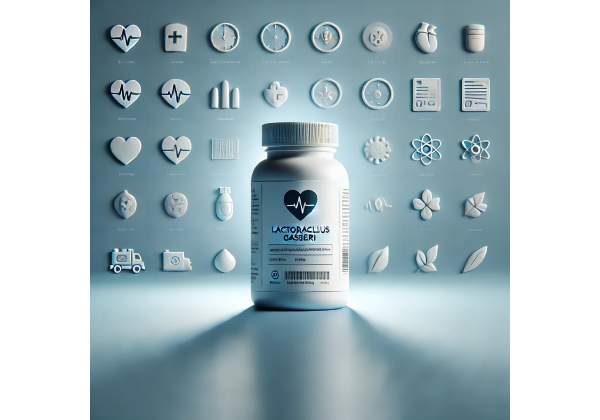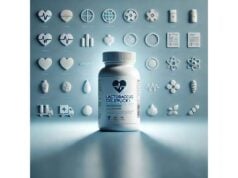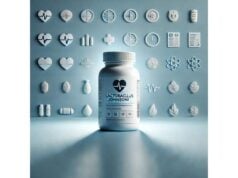
Lactobacillus gasseri—closely associated with the human gut and vaginal microbiome—has emerged as a well-studied probiotic for several targeted outcomes: supporting healthy body composition, assisting gastrointestinal comfort, complementing Helicobacter pylori management, and promoting vaginal ecosystem balance in select contexts. Its value lies in strain-specific actions: certain strains produce antimicrobial peptides, strengthen mucosal barriers, and influence fat absorption and inflammation pathways. This guide distills what matters in practice: which strains have human data, how to match the benefit you want with the right product and dose, how long to try it, and who should approach it with caution. You will also find realistic timelines for results, troubleshooting tips, and a quality checklist to help you pick supplements that actually deliver the claimed colony-forming units (CFU) through shelf life. While Lactobacillus gasseri is generally well tolerated, live microorganisms are not appropriate for everyone; this article frames the evidence and safety considerations so you can make an informed, people-first decision.
Quick Overview
- Human trials link specific strains (e.g., BNR17, SBT2055, OLL2716) with reduced visceral fat or improved upper GI comfort.
- Typical adult doses range from 1–10 billion CFU/day; some RCTs used 1×10^9 to 1×10^10 CFU/day for 12 weeks.
- Generally safe for healthy adults; transient gas or bloating may occur in week 1–2.
- Avoid or seek specialist advice if immunocompromised, critically ill, or if you have central venous catheters.
Table of Contents
- What is Lactobacillus gasseri?
- Does it actually work?
- Benefits by condition
- How to take it right
- Safety precautions and who should avoid
- Strain matters and quality checklist
What is Lactobacillus gasseri?
Lactobacillus gasseri is a lactic acid–producing bacterium found in healthy human microbiomes and selected fermented foods. In the gut and urogenital tract, it competes with pathogens through acidification (lactic acid), antimicrobial peptides (bacteriocins), and hydrogen peroxide, while interacting with immune pathways that influence local inflammation. The species is notable for strains that adhere to mucosal surfaces and demonstrate good acid and bile tolerance—properties that help them survive passage through the stomach and small intestine.
Taxonomy and naming evolve. Some strains historically labeled “Lactobacillus gasseri” now appear under updated species names as genetic classification advances. Manufacturers may still use legacy naming on labels. What matters most for buyers and clinicians is the strain code (for example, BNR17, SBT2055, OLL2716). Strain codes tie product claims to specific studies; two L. gasseri products with different strain codes can act very differently.
How it may help, in plain terms:
- Microbial competition and defense: Organic acids and bacteriocins reduce overgrowth of less desirable microbes in the gut and vaginal tract.
- Barrier support: Some strains upregulate tight junction proteins and reduce endotoxin leakage, an effect linked to comfort and metabolic markers.
- Lipid metabolism interface: In human and mechanistic studies, select strains appear to reduce dietary fat absorption and influence inflammatory tone, a potential pathway for visceral fat changes.
- Upper GI symptom support: Certain yogurt-delivered strains have been studied for dyspepsia and as adjuncts to H. pylori treatment protocols.
Where it shows up:
- Supplements: Single-strain capsules or blends; CFU counts typically 1–10 billion per daily serving.
- Functional foods: Fermented milks or yogurts standardized to a studied strain and dose.
- Women’s health formulas: Oral probiotics emphasizing vaginal ecosystem support may include L. gasseri alongside other Lactobacillus species.
Key points to remember:
- Species ≠ effect. Benefits are strain-specific and dose-dependent.
- Study-aligned use. Match your goal (e.g., visceral fat, dyspepsia) to the exact strain and regimen used in trials.
- Quality matters. Look for CFU guaranteed through expiration and clear handling instructions.
Does it actually work?
The most reliable evidence for Lactobacillus gasseri appears when focusing on defined strains, doses, and outcomes tested in randomized controlled trials. Broad, species-level promises are imprecise. The following patterns emerge across human studies and systematic reviews:
Body composition and visceral fat (adults).
Strains such as BNR17 and SBT2055 (LG2055) have been evaluated for their effects on visceral adipose tissue, waist circumference, and related measures. In controlled trials lasting about 12 weeks, daily intake ranging from 1×10^9 to 1×10^10 CFU/day (BNR17) or standardized fermented milk servings (SBT2055) produced modest but measurable changes in visceral fat areas and waistlines compared with placebo. Mechanistic work suggests reduced fat absorption and improved intestinal barrier function may contribute.
Upper GI comfort and H. pylori–related protocols.
A yogurt-delivered OLL2716 strain has been studied in two ways: (1) for functional dyspepsia or gastric discomfort in otherwise healthy adults, and (2) as a complement to first-line H. pylori eradication therapy. In these contexts, continuous daily consumption over 4–12 weeks has been associated with improved symptom scores and, when used pre-therapy, higher eradication success in some studies. These data support OLL2716 as a practical dietary adjunct rather than a standalone treatment.
Women’s vaginal health (adjunct support).
Oral Lactobacillus regimens that include L. gasseri have been explored for restoring Lactobacillus-dominant vaginal microbiota during or after standard care. Results vary by region and product, but recent clinical research indicates that selected L. gasseri strains, sometimes combined with L. crispatus, can support recovery from bacterial vaginosis (BV) and promote healthier vaginal microecology in the weeks after treatment.
Irritable bowel syndrome (IBS) subtypes.
Early work with BNR17 suggests potential benefits in diarrhea-predominant IBS—reductions in defecation frequency and improvements in quality-of-life indices in small trials. While encouraging, these findings are preliminary relative to the more established outcomes for body composition and upper GI symptoms.
What to expect and when.
- Timeline: For body composition, plan 12 weeks of consistent use; for upper GI symptom support, 4–12 weeks; for vaginal microecology, 4–8 weeks during and after conventional therapy.
- Magnitude: Expect modest, clinically relevant shifts (e.g., decreased visceral fat area, improved symptom scores). These are complementary effects, not replacements for diet, movement, or medical care where indicated.
- Variability: Response depends on strain, dose, adherence, baseline diet and microbiome, and concurrent treatments. Using a studied strain at the studied dose, daily, improves the odds of success.
Bottom line: yes—for specific outcomes with specific strains, Lactobacillus gasseri can deliver measurable benefits within realistic timelines. The key is matching your use case to the right strain and dose, and maintaining daily intake for the full trial period before judging results.
Benefits by condition
This section organizes practical use cases where Lactobacillus gasseri has human data, noting strains, typical study doses, and expectations. Always verify the exact strain code on the product label.
1) Visceral fat and waist circumference (adults)
- Best-studied strains: BNR17, SBT2055 (LG2055).
- What the research shows: Over 12 weeks, daily intake reduced visceral adipose tissue area and/or waist circumference versus placebo. Effects are modest but meaningful, especially when combined with nutrition and activity.
- Study-aligned dosing:
- BNR17: 1×10^9 to 1×10^10 CFU/day, typically as capsules, for 12 weeks.
- SBT2055: Standardized servings of fermented milk, sometimes as low as the 10^8 CFU/day order of magnitude, consumed daily.
- Realistic expectations: Changes are incremental; maintain consistent intake and track waist, weight, and visceral fat (DXA or comparable) if available.
2) Functional dyspepsia and upper GI discomfort
- Best-studied strain: OLL2716 (also known as LG21 in foods).
- What the research shows: Daily consumption of OLL2716-containing yogurt for 8–12 weeks can improve dyspepsia-related symptoms in both H. pylori–infected and uninfected adults.
- Study-aligned dosing: One serving of yogurt with the specified OLL2716 count each day.
- Realistic expectations: Symptom improvements typically emerge by week 4–8; best used as part of a broader plan (meal timing, trigger management).
3) H. pylori management (adjunct)
- Best-studied strain: OLL2716 as a pretreatment to standard triple therapy.
- What the research shows: A 4-week pretreatment phase with OLL2716-containing yogurt before first-line therapy has been associated with higher eradication rates and fewer GI side effects in some trials.
- Study-aligned dosing: Daily yogurt with OLL2716 for 4 weeks prior to starting eradication therapy, then follow your clinician’s protocol.
- Realistic expectations: Adjunct benefit; not a replacement for eradication regimens.
4) Vaginal microecology support (adjunct during recovery from BV)
- Best-studied approach: Oral L. gasseri strains, sometimes combined with L. crispatus, taken during or after standard therapy.
- What the research shows: In recovering patients, daily oral dosing over 4–8 weeks can help restore Lactobacillus-dominant flora and support symptom resolution.
- Study-aligned dosing: Product-specific; commonly ≥1×10^9 CFU/day.
- Realistic expectations: Use alongside clinician-directed treatment; results differ by region and baseline microbiota.
5) IBS-D symptom relief (emerging)
- Best-studied strain: BNR17.
- What the research shows: Small trials suggest improvements in diarrhea frequency and abdominal symptoms with daily BNR17 over 8–12 weeks.
- Realistic expectations: This remains an emerging use case; consider a trial period with careful symptom tracking.
6) General digestive comfort (non-specific use)
- Mixed evidence at the species level. If your goal is non-specific digestive support, consider multi-strain formulas where L. gasseri is part of a blend with corroborating data for your exact symptoms. Consistent daily intake for 4–8 weeks is a practical evaluation window.
Practical measurement tips:
- Pick one or two objective markers per goal (e.g., waist circumference at umbilicus, validated symptom scales) and track weekly.
- For upper GI symptoms, record meal timing, trigger foods, and stress alongside scores; this often clarifies what is driving improvements.
How to take it right
1) Pick the right strain for your goal
- Body composition: Look for BNR17 capsules (often 1–10 billion CFU/day) or SBT2055 in standardized fermented milk.
- Upper GI comfort or H. pylori adjunct: Choose OLL2716 yogurt or a product clearly listing OLL2716.
- Vaginal health recovery (adjunct): Consider L. gasseri paired with L. crispatus in products studied for BV recovery.
2) Dose, timing, and duration
- Adults (general): 1–10 billion CFU/day is common; match the exact dose if you are following a specific trial.
- With meals? Taking with food often improves tolerance and survival through gastric transit. Consistency matters more than clock time.
- Trial length:
- Body composition: Commit to 12 weeks before judging efficacy.
- Upper GI comfort: 4–12 weeks.
- Vaginal health support: 4–8 weeks alongside standard care.
- After antibiotics: If approved by your clinician, separate probiotics from antibiotics by 2–3 hours and continue for 1–2 weeks after the antibiotic course.
3) Storage and handling
- Follow the label. Freeze-dried capsules are often shelf-stable if kept cool and dry; some foods require refrigeration.
- Prefer products that guarantee CFU through expiration (not just “at manufacture”).
- For travel, use desiccant-packed blisters and avoid heat exposure (car interiors, direct sun).
4) Stacking with diet and lifestyle
- Pair L. gasseri with fiber-rich meals and adequate hydration.
- For body composition goals, align intake with a structured nutrition and movement plan; probiotics complement but do not replace these fundamentals.
- For upper GI comfort, layer in meal pacing, smaller portions, and trigger identification.
5) Troubleshooting common issues
- Gas or bloating in week 1–2: Often transient. Try taking with meals or step down to every other day for a week, then return to daily.
- No change after the full trial window: Reassess strain–goal match, adherence, and dose; consider switching to a trial-backed strain or revisiting diet and sleep.
- Sensitivity to fermented dairy: If yogurt-based, choose capsules with the same strain code, when available.
6) Example protocols (illustrative, not medical advice)
- Visceral fat focus: BNR17 1×10^10 CFU/day for 12 weeks, track waist and body composition every 4 weeks.
- Functional dyspepsia: One daily OLL2716 yogurt serving for 8–12 weeks, track validated symptom scores weekly.
- BV recovery support: Oral L. gasseri–containing product ≥1×10^9 CFU/day for 6 weeks starting during or immediately after standard care, monitor symptoms and pH per clinician guidance.
Safety precautions and who should avoid
General safety
Lactobacillus gasseri used in foods and supplements is generally well tolerated in healthy adults when taken at studied doses. Most side effects are mild and temporary as the microbiome adjusts.
Common, mild reactions
- Gas, bloating, or stool changes during the first 3–7 days. These often settle with continued use, taking with meals, or temporarily reducing frequency.
- Dairy-specific sensitivity with yogurt-based strains; switch to capsules if needed.
When to seek medical guidance first
- Immunocompromised states: neutropenia, post-transplant status, advanced HIV, or current chemotherapy.
- Critical illness or recent surgery: Live microorganisms are typically not initiated in these settings outside clinical protocols.
- Indwelling devices: Central venous catheters or prosthetic heart valves add risk for any live microbe; discuss with a specialist.
- Pregnancy and lactation: While L. gasseri appears in the normal human microbiome and some strains originate from human milk, discuss new supplements with your obstetric provider.
- Infants and children: Use only products and doses tested for age and indication, under pediatric guidance.
Medication interactions and timing
- Antibiotics: Separate by 2–3 hours; continue 1–2 weeks after antibiotics end to support microbial recovery.
- Immunosuppressants: Weigh risks and benefits with your care team.
- Other supplements: No well-established adverse interactions; introduce one new product at a time to identify sensitivities.
Recognize red flags
- Fever, chills, severe or worsening symptoms after starting a probiotic—stop and contact a clinician.
- Persistent upper GI pain, vomiting, GI bleeding, or unintended weight loss require evaluation; do not self-treat with probiotics alone.
- H. pylori management: L. gasseri is an adjunct, not a replacement for guideline-based eradication therapy when indicated.
Quality and contamination risk
- Choose brands listing strain code, CFU through expiration, lot number, and third-party testing.
- Avoid products with vague “proprietary blends” and no strain identification or unrealistic CFU claims.
Strain matters and quality checklist
Representative strains and where they fit
- BNR17
- Goal: Visceral fat and waist circumference (adults); exploratory data for IBS-D.
- Typical trial dose: 1×10^9 to 1×10^10 CFU/day for 12 weeks.
- Notes: Expect incremental body-composition changes; pair with diet and movement.
- SBT2055 (LG2055)
- Goal: Body composition support via fermented milk formats.
- Typical trial dose: Daily servings delivering approximately 10^8–10^9 CFU/day.
- Notes: Mechanistic work suggests reduced fat absorption and improved gut barrier integrity.
- OLL2716 (LG21)
- Goal: Functional dyspepsia support; adjunct prior to H. pylori therapy.
- Typical trial dose: Daily yogurt serving for 4–12 weeks.
- Notes: Practical in food form; confirm the label shows OLL2716 specifically.
- Women’s health adjuncts
- Goal: Support restoration of Lactobacillus-dominant vaginal flora during or after BV treatment.
- Typical trial dose: Oral products delivering ≥1×10^9 CFU/day for 4–8 weeks, sometimes paired with L. crispatus.
How to read a label like a pro
- Look for: Species and strain, CFU through expiration, serving size, storage, and lot number.
- Prefer: Products with published human data for your goal, transparent testing, and clear contact information.
- Be wary of: “At manufacture” CFU only, missing strain codes, or sweeping claims like “works for everything.”
Buying and using smartly
- Define your primary goal (e.g., reduce visceral fat, lessen dyspepsia).
- Pick a strain with human data for that outcome and match the dose and duration.
- Track one objective and one subjective metric weekly (e.g., waist in cm; validated symptom scale).
- Reassess after the full trial window; continue, adjust dose, or switch strains based on results.
- Layer in diet, sleep, activity, and—when relevant—clinician-directed care.
Frequently asked practical questions
- Can I take L. gasseri long term? Many people use it for months. Cycle based on goals, results, and clinician advice.
- Is more CFU always better? Not necessarily. Strain–dose match matters more than chasing very high numbers.
- Capsules vs. yogurt? Use the format used in the trial for your goal when possible; if dairy isn’t tolerated, find a capsule with the same strain code.
- Can I mix with prebiotics? Yes; add fermentable fibers gradually to limit gas.
Quality checklist
- Strain code present and appropriate for your goal.
- CFU guaranteed through expiration; storage stated clearly.
- Dose matches clinical usage.
- Third-party testing or quality seals visible.
- Manufacturer provides lot traceability and responsive support.
References
- Lactobacillus gasseri BNR17 Supplementation Reduces the Visceral Fat Accumulation and Waist Circumference in Obese Adults: A Randomized, Double-Blind, Placebo-Controlled Trial 2018 (RCT)
- The Effect of Continuous Intake of Lactobacillus gasseri OLL2716 on Mild to Moderate Delayed Gastric Emptying: A Randomized Controlled Study 2021 (RCT)
- Orally administrated Lactobacillus gasseri TM13 and Lactobacillus crispatus LG55 can restore the vaginal health of patients recovering from bacterial vaginosis 2023 (RCT)
- Effects of Lactobacillus gasseri OLL2716 on Helicobacter pylori-Associated Dyspepsia: A Randomized Double-Blind Controlled Study 2016 (RCT)
- Use of probiotics in preventing and treating excess weight and obesity: A systematic review 2024 (Systematic Review)
Disclaimer
This content is educational and does not replace personalized medical advice, diagnosis, or treatment. Always consult a qualified healthcare professional—especially if you are pregnant, breastfeeding, immunocompromised, have significant medical conditions, or plan to use probiotics alongside prescription therapies. If your symptoms worsen, or you develop fever, severe pain, dehydration, or bleeding, seek medical care promptly.
If this guide was helpful, please consider sharing it on Facebook, X (formerly Twitter), or your preferred platform, and follow us for future evidence-based articles. Your support helps us continue producing high-quality content.










